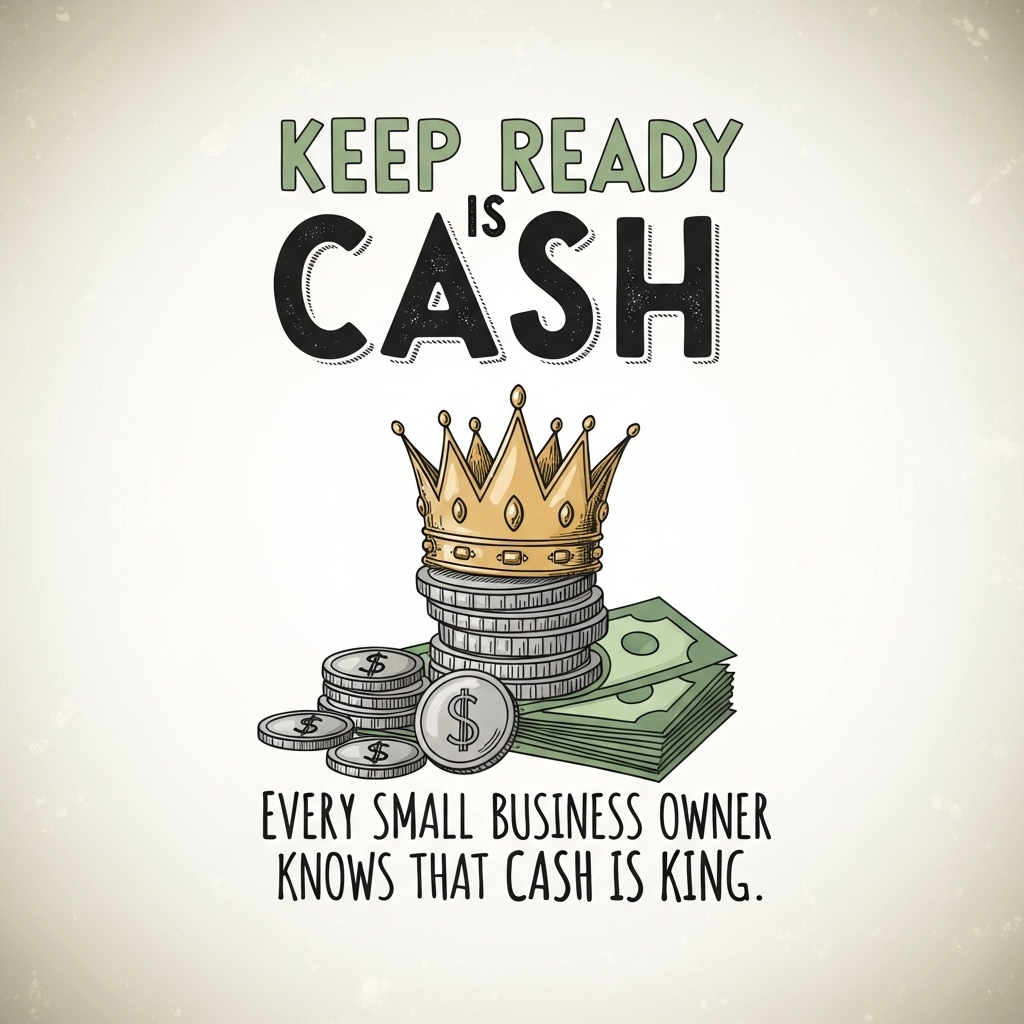Top 10 Ways Small Business Owners Can Keep Ready Cash
Every small business owner knows that cash is king. Whether you’re covering payroll, seizing a new opportunity, or weathering a slow season, having ready cash on hand gives your business power and peace of mind. Yet, keeping that cash flowing isn’t always easy. The good news: with the right strategies—and the right tools like QuickBooks and a fractional CFO—you can dramatically improve your cash position. Here are the top 10 ways to keep cash readily available in your business, with practical examples and actionable steps.
1. Send Invoices Immediately and Automate Reminders
Timely invoicing is the lifeblood of cash flow. The faster you bill, the quicker you get paid. Use QuickBooks to send invoices as soon as a job is done, and set up automated reminders so customers never miss a due date. Clear, prompt invoicing reduces payment lag and helps you forecast your cash position. For example, a landscaping business can send digital invoices on-site, cutting days off the payment cycle.
2. Offer Early Payment Discounts
Incentivize customers to pay sooner by offering a small discount—such as 2% off if paid within 10 days. QuickBooks lets you automatically apply early payment discounts on invoices, making it easy to encourage prompt payments. This method accelerates cash inflows and reduces the chance of late payments.
3. Lease, Don’t Buy Equipment
Leasing equipment instead of buying preserves your cash for core business needs. Monthly lease payments are more manageable than large upfront purchases, and they’re often tax-deductible. For example, a café owner can lease a new espresso machine, keeping thousands in the bank for inventory and marketing.
4. Tighten Up Inventory Management
Excess inventory ties up cash that could be used elsewhere. Conduct regular inventory reviews and use QuickBooks to track fast- and slow-moving items. Implement just-in-time inventory practices: order stock only when you need it. For instance, a retailer can monitor seasonal trends and adjust orders to avoid overstocking after the holidays.
5. Negotiate Better Payment Terms with Vendors
Stretch your outflows by negotiating longer payment terms with suppliers—30, 45, or even 60 days. This gives you more time to turn inventory into sales before cash leaves your account. A construction contractor, for example, might negotiate net-45 terms with material suppliers, freeing up funds for payroll and other expenses.
6. Use High-Interest Savings Accounts for Reserves
Don’t let your business reserves sit idle. Park surplus cash in a high-interest savings account. Many online banks offer competitive rates, and these accounts are FDIC-insured. This strategy not only keeps cash accessible for emergencies but also boosts your overall returns with minimal risk.
7. Regularly Analyze Cash Flow and Forecast Needs
A cash flow statement isn’t just paperwork—it’s your early warning system. Use QuickBooks’ cash flow reports to project future inflows and outflows. Run “what-if” scenarios, such as losing a major client or facing sudden expenses. Consistent analysis helps you spot trouble before it hits and make informed decisions about hiring, investing, or cutting costs.
8. Cut Unnecessary Expenses Ruthlessly
Scrutinize every business expense. Are there subscriptions you no longer use? Can you renegotiate your internet or phone contract? QuickBooks makes it simple to categorize and review expenditures over time. For example, a marketing agency might find they’re paying for redundant design software and can consolidate subscriptions.
9. Secure a Line of Credit Before You Need It
A business line of credit acts as a safety net, providing access to cash when you face shortfalls or opportunities. Apply when your finances are strong, not when you’re desperate. Use it judiciously—to cover temporary cash gaps or finance large orders, not for ongoing expenses.
10. Get Expert Help: Hire a Fractional CFO
A fractional CFO brings big-business financial expertise to your small business—without the full-time price tag. They can help you design cash flow strategies, optimize your use of accounting tools like QuickBooks, and provide critical insights for growth decisions. For example, a fractional CFO can identify cash flow bottlenecks, help renegotiate vendor contracts, and build robust financial forecasts.
How QuickBooks and a Fractional CFO Supercharge Your Cash Flow
QuickBooks isn’t just for bookkeeping—it’s a cash flow command center. With features like automated invoicing, easy expense tracking, payroll integration, and real-time reporting, you always know where your cash stands. Layer on the expertise of a fractional CFO, and you get strategic guidance: scenario planning, financial modeling, and best-practice processes tailored to your business.
Conclusion: Ready Cash, Ready for Anything
Building and maintaining ready cash isn’t a matter of luck—it’s about consistent habits, innovative tools, and expert guidance. By sending invoices promptly, offering early payment incentives, managing inventory wisely, and analyzing your cash flow regularly, you can keep your business nimble and resilient. Don’t wait for a cash crunch to take action. Make these ten strategies part of your business playbook today, leverage QuickBooks for real-time insight, and consider a fractional CFO to help you plan for lasting success. With ready cash, your business is prepared for anything.
Ready to Take Control of Your Business Finances?
Don’t let outdated beliefs or a lack of oversight put your business at risk. By combining innovative technology, sound legal structure, and expert financial guidance, you’ll build a compliance watchdog that protects your company and your peace of mind. The proper support means every expense is accounted for—no matter who’s making the purchase—and nothing ever “slips through.”
By investing in professional financial guidance, you’re not just preparing for a sale. You’re creating peace of mind, stability, and options for yourself and those who matter most.
Don’t wait for “someday.” Start building your sellable business today.
Like this article? Get in Touch!




